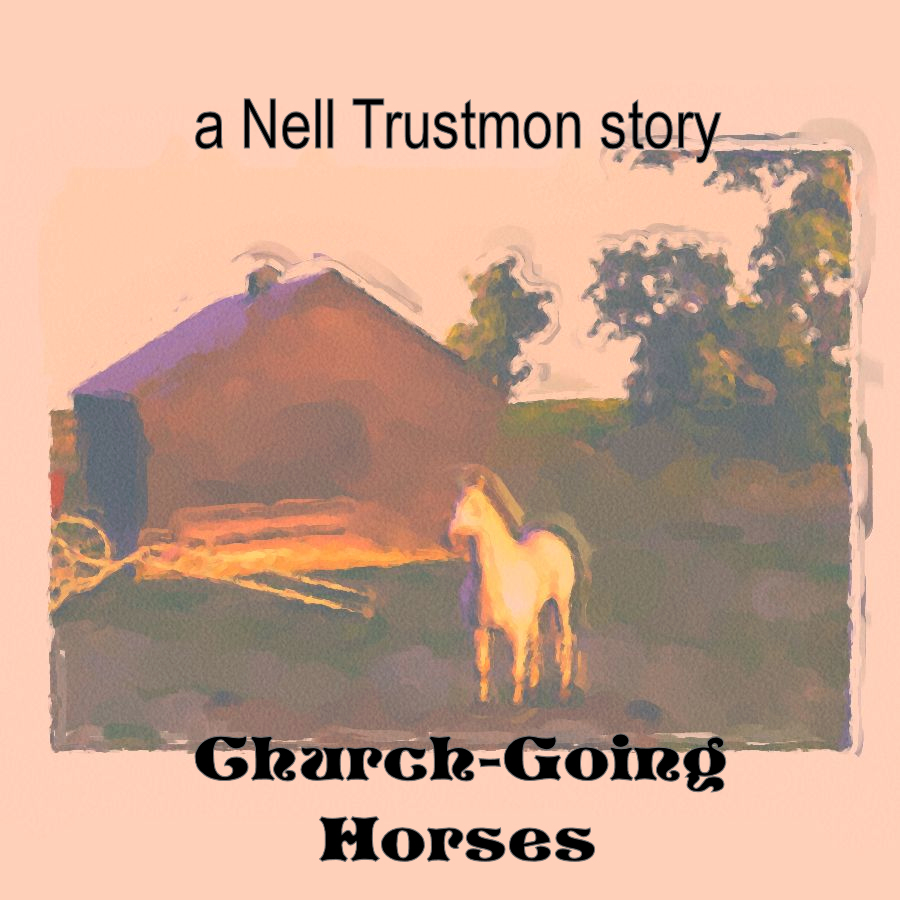

Church-Going Horses
The Church-Going Horses
A Nell Trustmon Story
The very first so-called western “ghost town” that I ever actually visited was Columbia, which was dubbed “the gem of California’s mining towns” by the local Chamber of Commerce. My husband’s family owned some property nearby and there was considerable discussion about turning the old, nearly abandoned town into a California State Park. He wanted to go up and see what was happening.
So in May 1941, he flew his small plane up from our home in Newport Beach to the small airport in Jackson, and he invited me along with the proviso that I bring no luggage. I stuffed some nylons and extra undergarments in my purse and off we went. We were able to hire a car from the local Ford dealer and spent three days sniffing things out.
Always the newspaper reporter, my husband, Nolan Trustmon, used the trip to interview some of the old sourdoughs and then wrote a very nice piece about the lynching of one bad hombre named “John Barclay.” (I say “nice” because my husband had an excellent eye for detail in his writing. The incident itself was gruesome and Nolan’s story is probably best viewed today as a piece of Halloween horror.)
The old western ghost town seemed to energize Nolan. He kept saying, “So many stories; such a rich history.” However, to be quite honest the collection of decrepit and crumbling buildings left me unenthused.
I had grown up in New England, and probably would have stayed on the Yankee seacoast my whole life had I not met this handsome newspaper guy from California. I loved the time we had spent together sailing on his boat — down the Atlantic Coast, through the Panama Canal, up along Mexico’s Pacific Coast, and into California. For me, true adventure came with waves and salt air, and always happened in far-away places.
My first impression of Columbia as a place was that there seemed to be nothing there. Some scrub oak trees, a mish-mash of buildings (some modern and some looked like they came straight from a western movie set), and some rusty equipment that no one had carted away. Compared to the real history found in Boston or Philadelphia, the dilapidated mining town seemed to me to be a nothing. “Why would the State of California spend its tax dollars to make this place into a historical state park?” I asked myself.
My lack of enthusiasm did nothing to dissipate Nolan’s intense fervor. On the flight back, he said, “Wonderful place! Too bad you did not like it.”
As I shared earlier, that trip was in May 1941. Then the War intervened. By February 1942, Nolan Trustmon was a Marine Corps Officer, completing flight school at the top of his class. Over the next two years, he flew forty-eight successful combat missions over the Pacific, but was killed on his forty-ninth.
I still say that “49” (not “13”) is the unluckiest of all numbers.
Nolan was killed in a far-off place that I had never heard of. It took me a half-hour to find it on the world map at the public library.
I share these details because in all of my travels throughout the Western United States (covering well over 300,000 very rugged miles), I never once returned to Columbia.
Since my initial visit, it had indeed become a California Historic State Park. Thousands of tourists and history buffs came every year, but I stayed away. In fact, I never ventured close; avoiding Angel’s Camp, Plymouth, Yankee Hill, Jamestown, Jackson, and Sonora.
Then in 1958, a terrible wildfire swept through Tuolumne County. I was concerned about the well-being of one of Nolan’s elderly relatives and I called her niece to inquire about her. The elderly relative was fine, the niece said, “But, Miss Emma has been asking about you. She knows that you write stories about the old mining towns, but you have never asked about hers.”
Properly, shamed, I drove up the very next week. This is one of Miss Emma’s stories.
